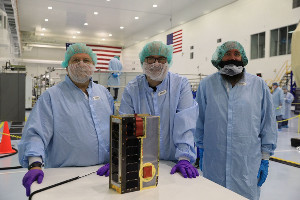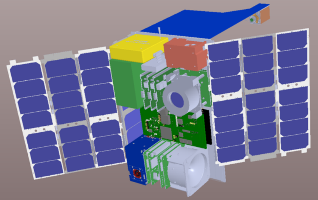| Spacecraft name | CuSP (CubeSat for Solar Particles) |
|---|---|
| Type | CubeSat |
| Units or mass | 6U |
| Status | Was operational until 2022-11-16, half a day with a 1 hour of listen-only transmission (Official update on NASA blog on 2022-12-08 as of 2022-12-24) |
| Launched | 2022-11-16 |
| NORAD ID | ? (Not catalogued?) |
| Deployer | CSD (Canisterized Satellite Dispenser) [Planetary Systems Corporation] |
| Launcher | SLS (Space Launch System) (Artemis-1) |
| Organization | Southwest Research Institute |
| Institution | Institute |
| Entity type | Government (Civil / Military) |
| Headquarters | US |
| Partners | NASA |
| Oneliner |
First protype of an interplanetary CubeSat space weather station to study solar particles. |
| Description |
Study Solar Particles. First protype of an interplanetary CubeSat space weather station. It will observe space weather events hours before they reach Earth.
|
| Results | |
| Failure cause | Was operating mostly as expected for the 1 hour contact. The solar arrays deployed, and they were stable and pointing at the Sun. However, anomalous software resets and temperature readings were reported during the contact. |
| Notes |
One of 13 SLS 6U Interplanetary or Lunar CubeSats |
| Sources | [1] [2] [3] |
| Photo sources | [1] [2] |
| Keywords | Propulsion, Beyond Earth orbit |
| On the same launch |
Last modified: 2024-12-15


